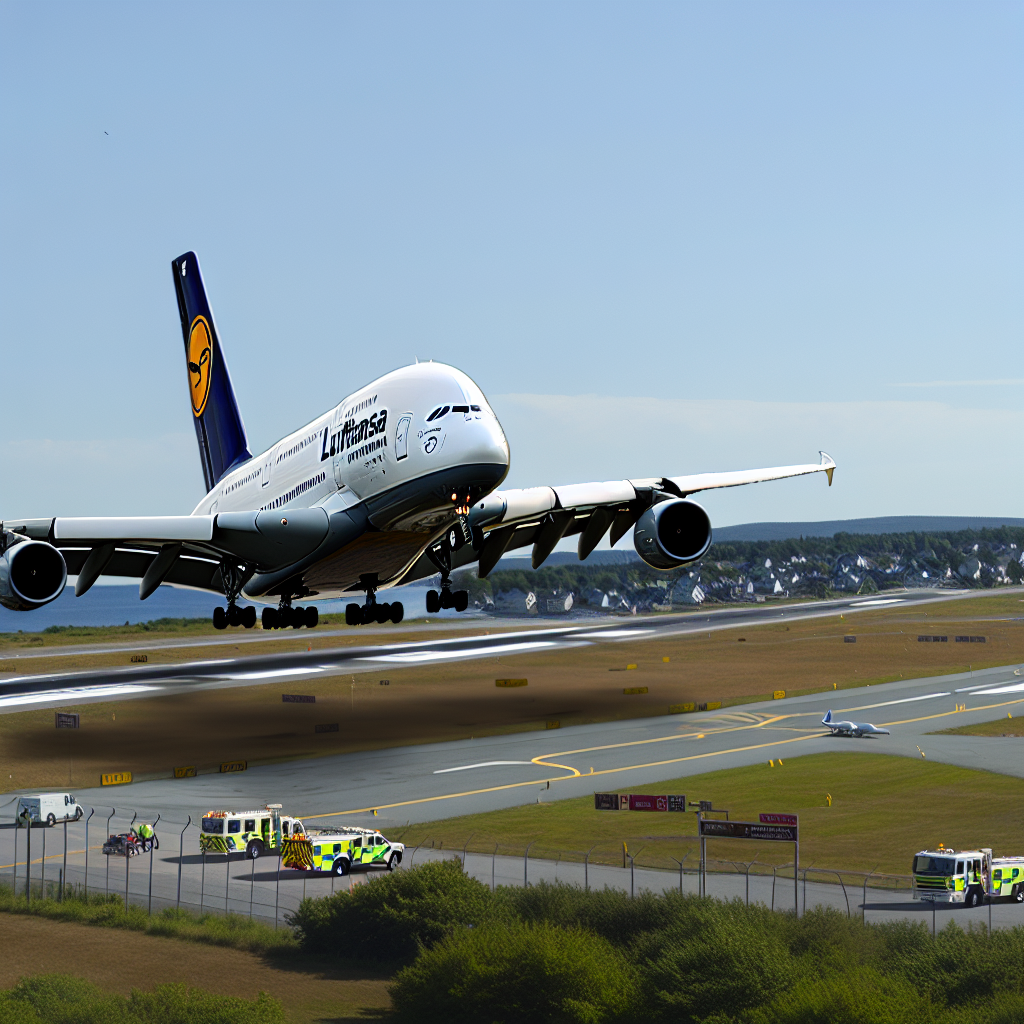FRANKFURT- A Lufthansa (LH) Airbus A380 operating flight LH453 from Los Angeles International Airport (LAX) to Munich Airport (MUC) executed an emergency landing at Boston Logan International Airport (BOS) due to a safety issue involving a personal electronic device.
The diversion was instigated after a business class passenger’s tablet lodged within their seat structure, raising concerns about a potential lithium-ion battery fire.
The aircraft successfully landed in Boston, where Lufthansa Technik personnel removed the device. Although the incident caused a noticeable delay, the airline placed safety as its top priority, particularly in light of the increasing incidents of battery-related fires on commercial flights.
Lufthansa flight LH453, a daily route from Los Angeles International Airport (LAX) to Munich Airport (MUC), was operated by an Airbus A380 (registration D-AIMC) with a capacity of 509 seats.
On Wednesday, April 23rd, the flight departed LAX at 17:47 PST, which was 17 minutes later than its original departure time of 17:30.
While in cruise at 35,000 feet over Canada, approximately 300 nautical miles northwest of Winnipeg, a passenger’s tablet became wedged in the seat’s mechanism, causing concern about potential overheating due to visible deformation of the device.
According to Simple Flying, a representative from Lufthansa stated, “To eliminate any potential risk, particularly with regard to possible overheating, the cockpit crew and air traffic control jointly decided as a precaution to divert the flight to Boston.”
The aircraft, carrying 461 passengers with a 91% load factor, altered its course and landed at Boston Logan International Airport (BOS) on runway 33L at 02:41 local time. Despite being overweight for landing, the diversion was performed safely.
Upon its arrival, Lufthansa Technik staff promptly assessed the situation. The damaged tablet, which displayed signs of deformation from the seat mechanism, was removed and inspected.
This process took a little over 90 minutes, after which the A380 resumed its journey and proceeded to Munich.
The flight reached its destination at 16:40 CEST on April 24th, arriving three hours later than the planned 13:40 time.
The airline’s quick response minimized delays and underscored its commitment to safety. A Lufthansa spokesperson reiterated, “At Lufthansa, the safety of our passengers and crew is always our top priority. The diversion was a purely precautionary measure.”
The incident significantly affected the flight’s schedule. Below is a comparison of scheduled and actual timings:
| Segment | Scheduled | Actual |
|---|---|---|
| Departure (LAX) | April 23, 17:30 PST | April 23, 17:47 PST |
| Arrival (MUC) | April 24, 13:40 CEST | April 24, 16:40 CEST (via BOS) |
Even with the delay, all 461 passengers and crew arrived safely, reinforcing Lufthansa’s focus on safety.
The A380’s large capacity and long-haul operational requirements make such diversions logistically challenging, but the decision was made to prioritize risk management over maintaining the schedule.
Concerns Around Lithium-Ion Batteries
The decision to divert may be perceived as drastic; however, it aligns with the aviation sector’s increasing caution regarding lithium-ion batteries, commonly found in personal devices like tablets and smartphones.
These batteries can be sensitive to temperature fluctuations and physical impacts, potentially leading to fires.
In this scenario, the deformation of the tablet signified a potential fire risk, warranting immediate action.
Recent incidents have highlighted these dangers. For instance, Southwest Airlines (WN) and Air Busan (BX) reported battery-related fires this year, the latter resulting in the destruction of a parked Airbus A321.
These occurrences have prompted airlines to reassess their handling policies regarding batteries, ensuring stricter precautions for electronic devices on board.
Airlines’ Measures for Device Safety
<pin light="" of="" battery-related="" events,="" numerous="" airlines="" have="" updated="" their="" in-flight="" safety="" protocols,="" instructing="" passengers="" to="" report="" immediately="" if="" a="" device="" becomes="" lost="" in="" the="" seat="" mechanism.
Flight attendants are now equipped to manage overheating devices using containment bags and fire suppression tools while advising passengers against adjusting seats when devices become lodged.
Aviation specialists advocate for immediate containment of such risks, even if it necessitates delays or diversions, which is a crucial practice in contemporary air travel.
Stay informed with us for the latest updates. You can also follow us on social media for real-time news.
Join us on Telegram Group for up-to-date aviation information. Additionally, follow us on Google News

Based on an article from aviationa2z.com: https://aviationa2z.com/index.php/2025/04/25/lufthansa-a380-makes-emergency-landing-in-boston/?utm_source=rss&utm_medium=rss&utm_campaign=lufthansa-a380-makes-emergency-landing-in-boston


